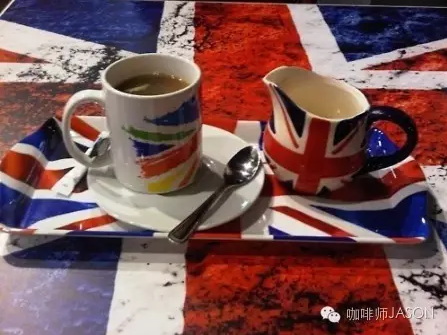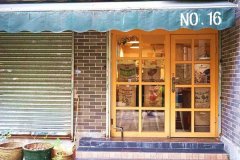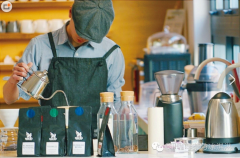An introduction to the History of Coffee in Britain-the Development of Literary Cafe
Coffee is absolutely an integral part of British people's daily life. Whether rich or poor, from workers, students to high society, they can establish a close relationship with the cafes built along the street. For them, drinking coffee is an essential part of life.

It is known all over the world that English people are addicted to tea. But from the mid-17th century to the early 18th century, the whole of London was soaked in coffee instead of tea. British men switch from drinking to drinking coffee, or both-get drunk in a pub and go to the cafe to sober up with caffeine and then go to the pub to continue drinking.
The first coffee shop in England appeared at Oxford University in 1650 and was opened by a Lebanese Jew. Two years later, the Greek Rosse opened a cafe in London. By 1700, there were more than 2000 cafes in London. Cafes are all over the streets of London. As the first place to provide equal exchange and dialogue for the public, cafes are very popular.
But from the very beginning, cafes have obvious "circle" characteristics, that is, "birds of a feather flock together, people are divided into groups"-Puritans, Protestants, Catholics, Jews, literati, merchants, lawyers, doctors, etc., almost every cafe has its own fixed number of guests. The open cafe has broken the previous social structure of hierarchy and identity, and has also made a new division on another level.
British cafes laid a solid foundation for the earliest modern publishing industry. The coffee party at will Cafe hosted by Dryden established the standard of literary appreciation from will Cafe to the literary world. The free debate in the cafe was the base of the early middle-class media such as "Light", "bystander" and the Guardian. The editors of these newspapers and magazines, based on what they observed in the cafe and the conversations they participated in there-- heard and discussed gossip about all kinds of news, learned about the intentions of the people and formed a consensus of view. finally formed those brilliant words.
In addition, the gathering of a group of cafes into a club with a rich British tradition is also a major feature of British cafes-the earliest coffee shop in the UK, opened at Oxford University, soon attracted a large number of coffee colleagues. In 1665, they founded the Oxford Coffee Club, which was joined by all academic elites, and was upgraded to the famous "Royal College" in 1662. During the prosperity of cafes, people were used to listening to news, comments and knowledge from all sides, and were free to participate in their opinions. But when the leaders of the cafe gradually formed their own club and closed the door to the public, people had to turn to the media for similar information.
King Richard II of England
British cafes are exclusive to men, and women (except the landlady) are not allowed in. The situation angered British women. In 1674, when cafes were in full swing in England, British women published an application for women to boycott coffee. They complained that "the dignity of British men is now gone. This is due to excessive consumption of coffee, the latest popular pagan drink."... " King Charles II of England issued a proclamation banning cafes in 1675. It is not clear whether the King's decree is out of respect for women or whether he is annoyed and disturbed by the criticism of current politics in the cafe. But the reality is that the law is opposed across the UK, and even women stand up against the closure of cafes-they fear that their husbands will return to their former alcoholism. Charles II lifted the ban two days before the ban was lifted after a week of unrest in Britain that almost endangered the throne of Charles II.
However, the prosperity of cafes throughout the 17th and early 18th centuries did not last long and was soon replaced by tea and teahouses. While European countries were growing coffee in their colonies, the British changed their coffee farms into tea farms after the occupation of India. On the one hand, Indian coffee was hit by coffee tree rust and died in large areas; on the other hand, it was related to the shift of British preferences. Elegant teahouses were originally a favorite place for intellectual women and children, but it wasn't long before men became infatuated with them, while cafes quickly became fast-food restaurants on the street or switched to other industries.
It was not until the 1950s that the coffee boom began to rise. However, the resurgence of coffee has challenged the British tradition of loving pure things-while welcoming espresso from Italy, more coffee enthusiasm has been given to instant coffee in the United States. At first, Italian espresso was popular with tea drinkers. After 1955, London's beautifully decorated Italian cafes were everywhere, filled with customers, drinking espresso brewed from mocha pots. Moreover, this time the cafe is no longer the monopoly of men, but also opened the door to women, so the cafe has become a fashionable place for men and women to gather. But this did not completely change the British habit of drinking tea until American instant coffee, along with television commercials, entered the lives of Britons who were still immersed in the famine of tea rationing. In 1956, the British tea rationing system was abolished, but the British tradition of drinking tea is not as optimistic as people think-fashionable people go to cafes to drink espresso, and more often, people choose instant coffee. When instant coffee accounted for 90% of the British coffee market and affected tea, exasperated British tea traders eventually had to learn from instant coffee, giving up better-flavored tea and shredding it into tea bags instead. Although the British tradition of drinking tea has not been completely replaced by coffee, the re-entry of coffee into Britain is indeed a big force, at least the British tea tradition has changed.
Important Notice :
前街咖啡 FrontStreet Coffee has moved to new addredd:
FrontStreet Coffee Address: 315,Donghua East Road,GuangZhou
Tel:020 38364473
- Prev

Warm Pavilion in the Secret Community: Caffe Amore
Key words: home style, hand-made / Italian style, dessert Caffe Amore is hidden in the secret community, the door opening and closing room is full of familiar guests. Michael, the boss, would be surprised to see a new face occasionally, but soon smiled at you, then continued to watch the siphon pot exhaust intently, and only moved the stove when the beans had absorbed enough water to release bubbles. The whole process of hand punching is orderly and well-organized.
- Next

Do you know all the little secrets about running a coffee shop?
According to incomplete statistics, there are more than 5000 cafes in Shanghai, with different sizes and styles. The big ones are magnificent, the small ones are delicate and exquisite. Generally speaking, a reasonable space design should start from the needs of people, taking into account not only the overall perception and experience of customers, but also the work line of the staff in the store. Ergonomic design will make everyone feel
Related
- What documents do you need to go through to open a coffee shop? coffee shop coffee shop certificate processing process
- How to purchase Coffee beans in small Cafe how to choose a suitable supplier for domestic Coffee supply Company
- How to drink Starbucks Fragrance White Coffee? how to make Australian White Coffee? what Italian coffee beans are recommended?
- The Story of Flora Coffee: the name of Flora Coffee Bean and the implication of the Flowers on Florna Coffee
- How much does a cup of coffee cost? How much is the profit of a cup of coffee? What is the profit of the coffee shop in a year?
- Yunnan small Coffee, known as "fragrant Coffee", introduces the characteristics of Alpine Arabica Coffee producing areas in Yunnan, China
- 2023 latest Starbucks full menu price list how much is a cup of Starbucks coffee what is better to drink the most popular hot and cold drinks recommended
- Starbucks different kinds of Coffee Price list Starbucks menu 2023 Top Ten Best drinks in Starbucks
- Starbucks Spring praise Comprehensive matching Coffee Bean theme Story Packaging implication and taste description
- The cost of a cup of coffee latte American coffee cost price and selling price

